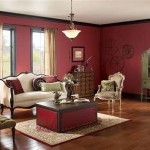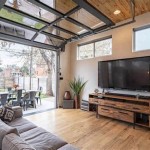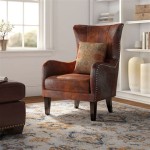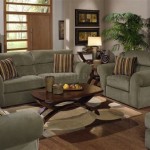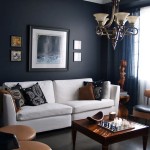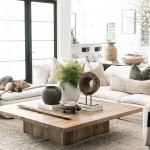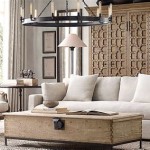Corner Tree for Living Room: An Aesthetic and Functional Addition
The inclusion of greenery within residential spaces has gained considerable traction in recent years. Among the various methods of integrating plants into interior design, the utilization of corner trees in living rooms presents a unique and compelling option. Corner trees serve not only as aesthetic enhancements but also contribute to improved air quality and a sense of tranquility within the home environment. This article aims to explore the advantages, selection criteria, and practical considerations associated with incorporating corner trees into living room designs.
Aesthetic and Psychological Benefits of Corner Trees
The presence of plants within a living space offers a multitude of aesthetic benefits. Corner trees, in particular, introduce a vertical element that can visually expand the perceived height of a room. This is especially advantageous in spaces with lower ceilings. The natural green hues of the foliage provide a striking contrast against typical interior color palettes, adding visual interest and depth. Furthermore, the organic shapes and textures of trees soften the often rigid lines of furniture and architectural elements, creating a more inviting and comfortable atmosphere.
Beyond aesthetics, the psychological impact of indoor plants is well-documented. Studies have shown that exposure to natural elements, even in the form of indoor plants, can reduce stress levels, improve mood, and increase concentration. The act of caring for a living plant can also be therapeutic, providing a sense of purpose and accomplishment. Corner trees, with their relatively low maintenance requirements, offer a sustainable and accessible way to reap these psychological benefits within the living room.
The strategic placement of a corner tree can also contribute to the overall design scheme of the room. It can serve as a focal point, drawing the eye and anchoring the space. Alternatively, it can be used to soften harsh corners, creating a more fluid and harmonious flow within the room. The choice of tree species and its accompanying pot or container can further enhance the desired aesthetic, whether it be modern, minimalist, bohemian, or traditional.
Selecting the Right Corner Tree for Your Living Room
Choosing the appropriate corner tree for a living room involves careful consideration of several factors, including available space, lighting conditions, and maintenance requirements. It is crucial to assess the dimensions of the corner where the tree will be placed to ensure that it will comfortably fit without obstructing walkways or other furniture. The mature size of the tree should also be taken into account to avoid future overcrowding.
Lighting is a critical factor in the health and longevity of indoor plants. Assess the amount of natural light that the corner receives throughout the day. Some trees thrive in bright, indirect light, while others prefer lower light conditions. If the corner receives limited natural light, supplemental artificial lighting may be necessary to support the tree's growth. LED grow lights are a popular option, as they are energy-efficient and provide the specific wavelengths of light that plants need to photosynthesize.
Maintenance requirements are another important consideration. Some trees are relatively low-maintenance, requiring only occasional watering and pruning, while others demand more attention. Consider your lifestyle and available time when selecting a tree. If you are a busy individual, opt for a hardy and drought-tolerant species. Popular low-maintenance corner tree options include Snake Plants (Sansevieria trifasciata), ZZ Plants (Zamioculcas zamiifolia), and Fiddle Leaf Figs (Ficus lyrata), though the latter can be more demanding.
Furthermore, consider the potential allergenic properties of certain tree species. Individuals with allergies may be sensitive to pollen or sap produced by some plants. Research the potential allergens associated with different tree species before making a selection to ensure a healthy and comfortable living environment.
The aesthetic compatibility of the tree with the existing decor is also essential. Choose a tree that complements the color scheme, furniture style, and overall design aesthetic of the living room. The pot or container in which the tree is planted should also be carefully selected to enhance the overall visual appeal. Consider the material, color, and shape of the container to create a cohesive and harmonious look.
Practical Considerations for Incorporating Corner Trees
Once the appropriate corner tree has been selected, several practical considerations must be addressed to ensure its successful integration into the living room. Proper soil drainage is crucial to prevent root rot. Use a well-draining potting mix specifically formulated for indoor plants. Avoid overwatering, as this can lead to root suffocation and fungal diseases. Allow the soil to dry slightly between waterings, and adjust the watering frequency based on the tree's specific needs and the environmental conditions.
Humidity levels in the living room can also impact the health of the corner tree. Many indoor plants prefer higher humidity levels than are typically found in homes, especially during the winter months when heating systems are in use. Consider using a humidifier to increase the humidity around the tree, or group it with other plants to create a microclimate with higher humidity. Misting the foliage regularly can also help to increase humidity levels.
Regular pruning is necessary to maintain the shape and size of the corner tree, as well as to remove any dead or damaged leaves or branches. Use clean, sharp pruning shears to avoid spreading diseases. Prune the tree according to its specific needs and growth habits. Research the proper pruning techniques for the selected tree species to ensure that you are not inadvertently harming it.
Fertilizing the corner tree is essential to provide it with the nutrients it needs to thrive. Use a balanced liquid fertilizer specifically formulated for indoor plants. Follow the instructions on the fertilizer label carefully, and avoid over-fertilizing, as this can burn the roots. Fertilize the tree during the growing season, typically from spring to fall, and reduce or eliminate fertilization during the dormant season in winter.
Repotting the corner tree may be necessary as it grows larger. Choose a pot that is slightly larger than the current pot, and use fresh potting mix. Gently remove the tree from its original pot, being careful not to damage the roots. Loosen any circling roots, and place the tree in the new pot. Fill the pot with potting mix, and water thoroughly. Repot the tree every one to two years, or as needed, to provide it with fresh soil and adequate space for root growth.
Protecting the surrounding flooring from water damage is also a practical consideration. Use a saucer or tray underneath the pot to catch any excess water that drains out. Consider using a plant stand to elevate the pot off the floor, allowing for better air circulation and preventing moisture from being trapped underneath the pot. Clean up any spills promptly to prevent staining or damage to the flooring.
Finally, consider the safety of children and pets when incorporating corner trees into the living room. Some plants are toxic if ingested, so it is important to choose non-toxic species if you have young children or pets who may be tempted to nibble on the leaves. Keep toxic plants out of reach, or consider using a plant stand or hanging planter to keep them safely away from children and pets.
By carefully considering these practical aspects, individuals can successfully integrate corner trees into their living rooms, creating aesthetically pleasing and psychologically beneficial spaces that enhance the overall quality of life within the home.

Houseplants And Their Containers

Realistic Diy Faux Trees Lavender Brook Home

The Best Plants For Filling A Corner In Your Home My Simpatico Life

Diy Corner Tree Bookshelf A Unique Inspired Design

Creating A Relaxing Money Plant Corner In Your Living Room Decoration Green Decor

Corner Tree Branch Bookshelf Wall Mount Custom Shelves Wooden Floating Live Edge Shelving Living Room Decor Etsy

Dr Plaen 5 Feet Artificial Ficus Tree Lifelike Greenery With Natural Wood Trunk For Living Room Office Floor And Corner Decor Tall Indoor

How To Diy Corner Tree Bookshelf Steps Photos

27 Best Indoor Trees To Add Beauty Your Home

Bedroom With White Corner Chair And Potted Olive Tree Transitional

